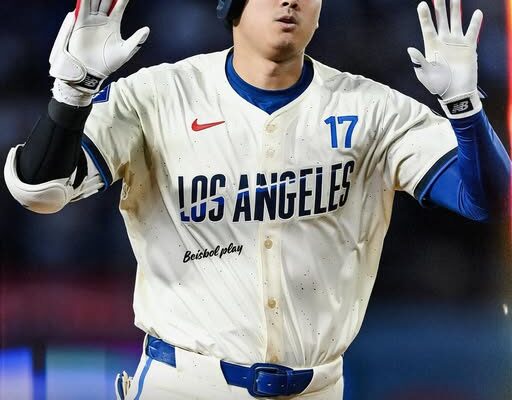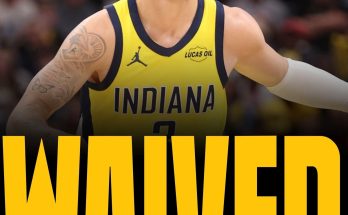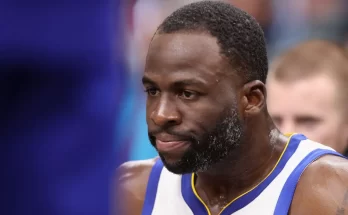As the baseball world pauses for its annual Midsummer Classic, the air is thick with anticipation, but perhaps no player commands more attention, admiration, and awe than Shohei Ohtani. On the eve of the All-Star Game, his latest statistical marvel – blasting 30 home runs before the All-Star break – serves as a thunderous declaration of his continued dominance as a hitter and fuels the increasingly undeniable assertion: Shohei is the National League’s true MVP.
Thirty home runs before the All-Star break is a prodigious feat for any player, regardless of the era. It places Ohtani among the elite power hitters in the game, demonstrating his consistent ability to drive the ball out of any ballpark. But for Ohtani, this offensive explosion is merely one facet of a diamond-like performance that distinguishes him from every other player in Major League Baseball. He’s not just a prolific slugger; he’s a true unicorn, a two-way sensation whose contributions on both sides of the ball defy conventional analysis and push the boundaries of what was once thought possible in professional baseball.
His 30 home runs showcase his incredible strength, bat speed, and refined approach at the plate. He’s not simply swinging for the fences; he’s demonstrating a keen understanding of pitching, adjusting to different arsenals, and finding ways to consistently barrel up pitches. Whether it’s a fastball up in the zone, a breaking ball on the corner, or an off-speed pitch, Ohtani has proven he can hit it out. This sustained power surge is a testament to his dedication to his craft, his exceptional physical conditioning, and his relentless pursuit of offensive excellence. He is a nightmare for opposing pitchers, who know that one mistake can lead to a ball disappearing into the stands.
But the MVP conversation, particularly for Ohtani, extends far beyond just his offensive numbers. While 30 home runs are eye-popping, they are amplified exponentially by his concurrent contributions on the mound. Even as he recovers from injuries or manages his workload, his ability to step onto the rubber and dominate opposing lineups elevates him into a class of his own. Whether he’s delivering high-90s fastballs, deceptive splitters, or wicked sliders, Ohtani continues to be a legitimate major league pitcher. His presence on the mound, even in a modified role (as indicated by him building up innings after recovery, or acting as a multi-inning opener), creates a strategic nightmare for opposing managers and adds an unparalleled dimension to his value. No other player in baseball forces opposing teams to prepare for two entirely different, elite skill sets from the same individual.
The MVP award, by definition, recognizes the player most valuable to their team’s success. For the Los Angeles Dodgers, Ohtani’s impact is not just statistical; it’s transformative. He’s a drawing card, a cultural phenomenon, and a catalytic force within the clubhouse. His presence elevates the entire franchise, from ticket sales and merchandise to overall team morale and competitive spirit. When Ohtani is in the lineup, and especially when he’s pitching, there’s an undeniable buzz, an electric energy that surrounds every game. He embodies the excitement and dynamism of baseball, captivating audiences worldwide.
Consider the narrative surrounding the National League MVP. While other deserving candidates will undoubtedly emerge with stellar hitting or pitching seasons, none will possess the unique combination of skills that Ohtani brings to the table. A player who hits 30 home runs by July, while also taking the mound and contributing quality innings, simply operates on a different plane. He forces us to reconsider the very definition of “value.” Is it merely hitting for power, or hitting for average, or striking out batters? Or is it the ability to fundamentally change the game in multiple, distinct ways, a feat only Ohtani consistently achieves?
Furthermore, Ohtani’s historical significance cannot be overlooked. Each season he continues to perform at this two-way level, he re-writes the record books and solidifies his place as one of baseball’s all-time greats. He’s not just competing in this era; he’s transcending it, drawing comparisons to legends from a century ago while showcasing skills that feel distinctly futuristic. The MVP award is often a nod to history being made, and Ohtani’s continued two-way excellence is precisely that.
His impact extends beyond the box score. Ohtani’s disciplined approach at the plate, his willingness to take walks, and his speed on the bases (which also contributes to runs scored) further enhance his offensive profile. He’s not just swinging for the fences; he’s manufacturing runs in multiple ways, putting constant pressure on opposing defenses. And on the mound, his command and ability to induce swings and misses provide critical outs, shortening games and protecting a bullpen.
In discussions of MVP, there’s often a debate about whether the player is simply putting up great numbers or actively making their team better. With Ohtani, it’s unequivocally the latter. He is a gravitational force that draws attention, creates opportunities for his teammates, and dictates the flow of the game whenever he steps onto the field, whether with a bat or a ball in hand. He’s the fulcrum around which the Dodgers’ success revolves.
Before the first pitch of the All-Star Game is thrown, and the second half of the season truly begins, it’s clear that Shohei Ohtani has already done more than enough to establish himself as the frontrunner for the National League MVP. His 30 home runs are just the headline, a dazzling statistic that only scratches the surface of his unparalleled contributions. He is a generational talent, a marvel of modern baseball, and the undeniable most valuable player in the National League. His continued strength as a batter, combined with his unique two-way capabilities, makes him not just a candidate, but the very embodiment of what it means to be truly indispensable to a team’s success. The MVP trophy belongs in his hands.



